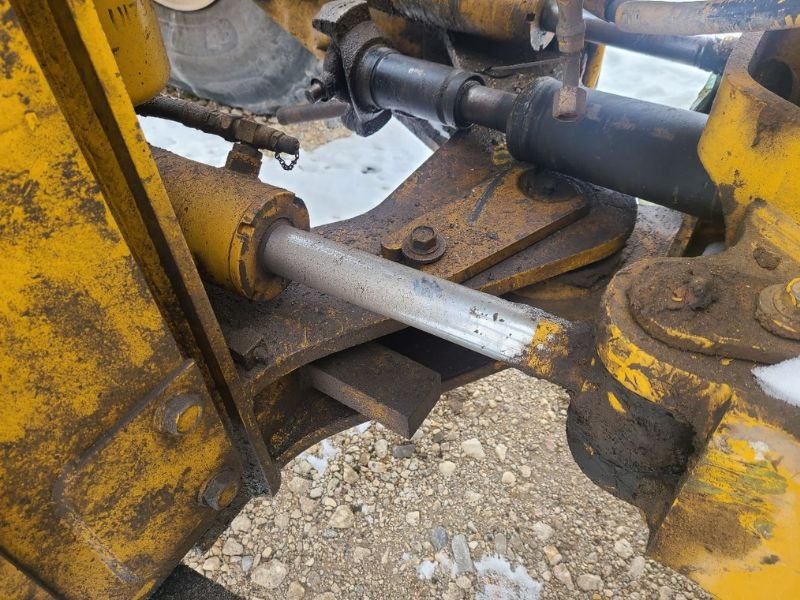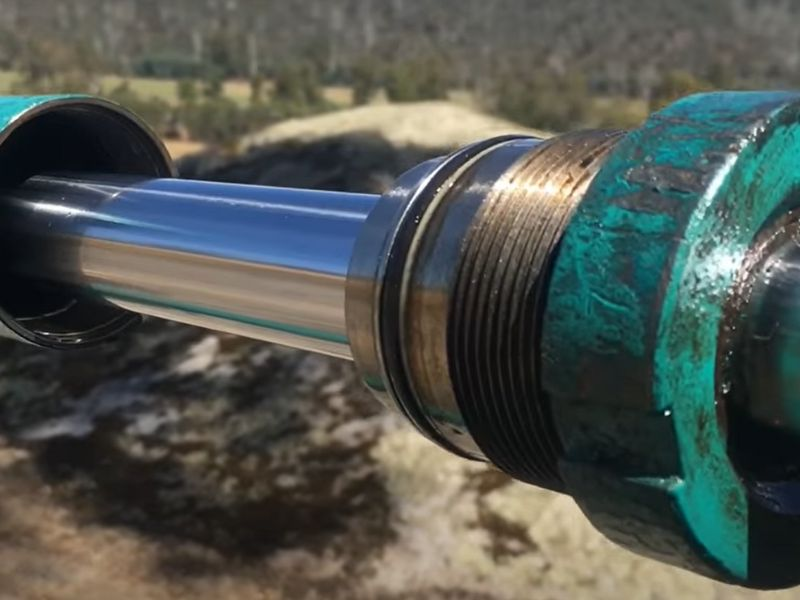Lubricating hydraulic cylinders is an essential maintenance task that is critical for their optimal performance. Proper lubrication ensures smooth operation and extends the life of the hydraulic cylinder.
We will delve into the mechanics of hydraulic cylinders, signs that indicate the need for lubrication and selecting the correct lubricant.
Understanding the mechanics of hydraulic cylinders is essential for anyone looking to maintain them effectively. At its core, a hydraulic cylinder is a simple yet powerful device used to generate linear motion and force by utilizing hydraulic fluid. The basic principle involves hydraulic fluid being pushed into the cylinder, which in turn moves a piston. This movement is what generates the force and motion.
Key components of a hydraulic cylinders include the piston, seals, and rods. The piston, which fits snugly inside the cylinder, moves back and forth as hydraulic fluid enters and exits the cylinder. The seals are equally important; they keep the hydraulic fluid in place and prevent leaks, ensuring that the pressure is maintained within the system. The rod, attached to the piston, extends and retracts from the cylinder, creating the necessary motion for the task at hand.
Lubrication plays a critical role in the functionality of these components. Proper lubrication reduces friction between the moving parts, particularly where the piston and seals interact with the interior surface of the cylinder. This not only ensures smoother operation but also minimizes wear and tear. Without adequate lubrication, increased friction can lead to faster degradation of these parts, potentially causing leaks, loss of efficiency, and even system failure.
In summary, each component of a hydraulic cylinder—the piston, seals, and rods—relies on proper lubrication to function smoothly and efficiently. Understanding the interplay between these components and lubrication can help in maintaining the cylinder’s longevity and reliability, ensuring it performs optimally in various industrial applications.

Knowing when a hydraulic cylinder needs lubrication is crucial for maintaining its performance and extending its service life. There are several tell-tale signs that indicate a cylinder is suffering from under-lubrication or poor lubrication. The most common symptom is a noticeable decrease in the smooth operation of the cylinder, which can manifest as jerky or uneven movements. This is a clear sign that the internal components are not sliding past each other as seamlessly as they should.
Another indicator is an unusual noise, such as squeaking or grinding, coming from the cylinder during operation. These sounds are typically the result of increased friction between moving parts, a direct consequence of insufficient lubrication. Over time, this friction can lead to accelerated wear and tear, significantly shortening the lifespan of the cylinder.
Increased operating temperatures can also indicate lubrication issues. When there is insufficient lubricant or if the lubricant has degraded, the friction inside the cylinder generates excess heat. This not only reduces the system's efficiency but can also damage seals and other components, leading to leaks and further performance problems.
In the long term, neglecting proper lubrication can result in more severe consequences, such as permanent damage to the internal components of the cylinder, including scoring on the piston rod or barrel. Such damage often requires costly repairs or even complete replacement of the cylinder.
Regularly monitoring these signs and promptly addressing lubrication needs can save a significant amount of time and resources over time. It ensures that hydraulic cylinders operate efficiently and reliably, avoiding downtime and extending the equipment's overall lifespan.
Selecting the right lubricant for hydraulic cylinders is a decision that should be made carefully. There are various types of lubricants available, each designed to meet specific requirements and operating conditions. Common options include mineral oil-based lubricants, synthetic lubricants, and water-based lubricants. Mineral oil-based lubricants are widely used due to their availability and cost-effectiveness. Synthetic lubricants, although more expensive, offer superior performance under extreme temperatures and pressures. Water-based lubricants, while less common, can be useful in applications where fire resistance is a priority.
When choosing a lubricant, several factors must be considered. The operating temperature of the hydraulic system is one of the most critical factors. Lubricants have different viscosities and thermal properties, so it’s essential to select one that can maintain its consistency and effectiveness across the cylinder’s operating temperature range. The type of hydraulic cylinder also influences the choice of lubricant. For example, cylinders used in high-load and high-speed applications may require lubricants with specific additives to ensure better performance and protection.
Another important factor is the frequency of use. Cylinders that operate continuously may require lubricants with higher durability to withstand prolonged use without degrading. On the other hand, cylinders used infrequently might benefit more from lubricants with enhanced anti-corrosion properties.
Each type of lubricant has its own advantages and disadvantages. Mineral oil-based lubricants are widely available and relatively inexpensive, making them a practical choice for most standard applications. However, they may not perform as well under extreme conditions. Synthetic lubricants excel in both high and low-temperature extremes and offer better oxidative stability, but they are more costly. Water-based lubricants provide excellent fire resistance, but they may not deliver the same level of lubrication and protection as their oil-based counterparts.

The lubrication of hydraulic cylinders, although crucial for their operation, also comes with environmental considerations that need to be addressed responsibly. The environmental impact of lubricants is a major concern, particularly in terms of disposal and the potential for contamination.
Choosing environmentally friendly lubricants is a positive step. For example, biodegradable lubricants are designed to degrade more rapidly and with less environmental impact compared to traditional ones. These lubricants usually have lower toxicity levels, which makes them safer for ecosystems in the event of leaks or spills.
Using lubricants efficiently is another best practice. This includes applying the right amount of lubricant and selecting high-quality products that last longer and require less frequent replacement. By doing so, you can reduce waste and minimize the environmental footprint.
The proper disposal of used lubricants is also crucial. Used lubricants should never be thrown away with regular trash or poured down drains, as they contain contaminants that can harm the environment and water sources. Instead, they should be collected and disposed of or recycled through appropriate channels. Many regions have facilities dedicated to the safe disposal or recycling of used industrial lubricants.
Regular maintenance to prevent leaks is essential. Leaks not only waste lubricant but also pose a significant risk to the environment, particularly in sensitive areas. Regular inspections and timely repairs of leaks help maintain environmental integrity.
Finally, it is crucial that users of lubricants understand the importance of environmental safety. Understanding the impact of lubricants on the environment and the best practices for their use and disposal can significantly reduce negative environmental impacts.
By implementing these best practices, the environmental impact of lubricating hydraulic cylinders can be minimized, contributing to a more sustainable approach in industrial maintenance.
Throughout the testing and troubleshooting process, it is important to keep detailed records of any issues encountered and how they were resolved. This not only aids in current repairs but also provides valuable information for future maintenance and rebuilds. With thorough testing and diligent troubleshooting, your rebuilt hydraulic cylinder should be ready to provide reliable service in your machinery.